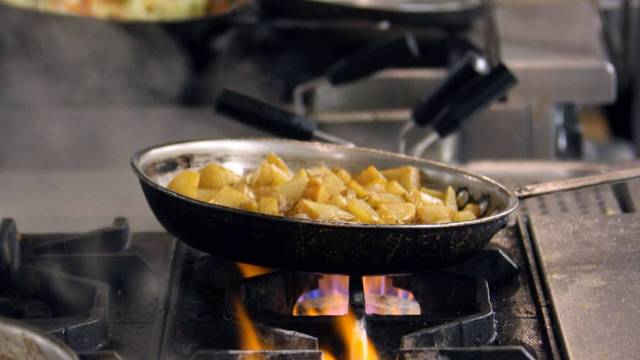Asian Restaurant ISB: A Must-Try Place for Food Lovers in Islamabad
Asian Restaurant ISB: A Must-Try Place for Food Lovers in Islamabad
Blog Article
Savor Authentic Oriental Food With a Pan-Asian Spin for a Cooking Adventure
Getting started on a cooking trip through authentic Oriental food, boosted with a Pan-Asian spin, supplies a distinct possibility to explore the rich tapestry of flavors that specify the area's diverse culinary traditions. As you consider these attracting recipes, take into consideration the social narratives and historical influences that form them, each bite offering a story waiting to be discovered. best asian restaurant Islamabad.

Exploring Pan-Asian Tastes
In the world of global gastronomy, Pan-Asian food stands out for its remarkable variety and the unified interaction of tastes from various Oriental societies. This culinary approach celebrates the unique components and abundant practices discovered across the continent, developing a tapestry of preferences that is both intriguing and gratifying. Secret to Pan-Asian cuisine is its ability to stabilize contrasting flavors-- sweet, salty, spicy, and sour-- while highlighting the freshness and quality of each ingredient.
From the umami-rich soy sauce of Japan to the fiery chili peppers of Thailand, Pan-Asian cuisine uses a comprehensive palette of tastes. These elements are commonly incorporated in innovative means, boosting dishes with layers of intricacy. For example, the use of great smelling natural herbs such as lemongrass and cilantro, common in Vietnamese and Thai food, adds a refreshing illumination to dishes, while the incorporation of coconut milk delivers a luscious, abundant structure.
The focus on fresh produce and fragrant flavors makes certain that each dish is not just a banquet for the taste yet also for the detects. Pan-Asian cuisine welcomes restaurants to start a culinary trip, discovering the vast and differed landscapes of Asian gastronomy with every bite.
Fusion Meals to Attempt
While Pan-Asian food is commemorated for its typical tastes, the modern-day cooking landscape is progressively embracing combination meals that blend these timeless components with impacts from other regions. This innovative method not only honors the abundant heritage of Oriental cookeries but additionally introduces unique preference experiences that interest contemporary tastes buds.
An archetype of such a blend dish is the Korean-Mexican taco, where seasoned bulgogi beef is wrapped in a cozy tortilla, topped with kimchi and a spicy gochujang-infused salsa. This mix marries the bold, tasty tastes of Korea with the lively, fresh elements of Mexican cuisine. Likewise, sushi burritos have actually obtained appeal, integrating the delicate creativity of Japanese sushi with the hearty, hand-held convenience of a burrito, often featuring blend active ingredients like tempura shrimp and avocado with a drizzle of wasabi mayo.
Another noteworthy recipe is Thai curry ramen, which infuses the velvety, aromatic spices of Thai curry right into the calming broth of typical Japanese ramen, developing an unified blend that entices the senses. These blend meals prolong beyond mere uniqueness; they stand for a cooking discussion between societies, urging exploration and innovation in the globe of Pan-Asian cuisine.
Essential Active Ingredients and Flavors
To really appreciate Pan-Asian cuisine, one have to comprehend the important ingredients and flavors that form its foundation. This diverse culinary design draws from an abundant tapestry of Oriental practices, employing a harmonious mix brunch places of appearances and tastes.
Aromatic elements are essential, with lemongrass, ginger, and garlic being common throughout various Pan-Asian recipes. These active ingredients provide a great smelling base that improves the complexity of flavors. Flavors such as star anise, cardamom, and cinnamon present warmth and character, resembling impacts from regions like China and India.

Food Preparation Strategies and Tips
Mastering the art of Pan-Asian cuisine requires knowledge with its distinctive cooking strategies, each adding to the vibrant tapestry of flavors this cooking practice is commemorated for. Central to these approaches is the stir-fry, a quick cooking method that protects the dietary stability and brilliant colors of active ingredients. Making use of a frying pan, the stir-fry method enables for even warm circulation, crucial for attaining the particular texture and flavor equilibrium of Pan-Asian dishes.
One more essential strategy is steaming, especially widespread in Chinese food. This gentle approach maintains the all-natural flavors and nutrients of components, making it perfect for seafood and vegetables. Dumplings, a precious staple, often benefit from steaming, resulting in soft, succulent structures.
Grilling, additionally integral, passes on smoky depths to dishes such as Oriental bulgogi or Japanese yakitori (pan asian restaurant Islamabad). This method frequently involves seasoning components, enabling tastes to pass through deeply before food preparation over an my restaurant open flame or warmer
Last but not least, understanding the art of stabilizing flavors-- pleasant, sour, salted, bitter, and umami-- is important. Effectively layering these aspects can elevate a dish from ordinary to extraordinary, using a complex and satisfying cooking experience that symbolizes the significance of Pan-Asian cuisine.
Eating Experiences Worldwide
Around the world, Pan-Asian food provides an exceptional dining experience, commemorated for its rich tapestry of flavors and lively presentations. This cooking sensation has actually transcended cultural boundaries, capturing the hearts and tastes buds of food enthusiasts worldwide. In cosmopolitan cities like New York, London, and Sydney, Pan-Asian restaurants function as melting pots where culinary practices from Thailand, Japan, China, and past assemble, providing restaurants with a diverse mix of meals that highlight the area's variety.
The international allure of Pan-Asian food exists in its capability to supply both authenticity and advancement. Cooks skillfully wed typical components such as lemongrass, soy sauce, and miso with contemporary methods, causing dishes that are both familiar and refreshingly brand-new. This blend enables restaurants to embark on a cooking trip that values heritage while accepting modernity.
In addition, eating experiences are raised with attentively created environments that mirror the values of Pan-Asian looks. From minimal Japanese-inspired interiors to vivid Thai-themed rooms, each restaurant offers an unique atmosphere that matches the culinary offerings. Consequently, patrons are not merely eating a dish yet partaking in a cultural experience, making Pan-Asian eating a genuinely international sensation.
Conclusion
The expedition of Pan-Asian food supplies an extensive understanding of the intricate interplay of flavors and culinary customs throughout Asia. By accepting blend recipes such as Thai curry ramen and sushi burritos, the culinary trip not only highlights the adaptability of traditional ingredients but additionally showcases innovative modern-day strategies. This gastronomic journey, enhanced by crucial spices and cooking techniques, supplies an unique opportunity to appreciate the social variety and cooking artistry that define Pan-Asian food on an international range.
Beginning on a culinary trip via genuine Eastern food, boosted with a Pan-Asian spin, supplies an one-of-a-kind opportunity to discover the abundant tapestry of tastes that define the area's diverse cooking practices.In the world of worldwide gastronomy, Pan-Asian food stands out for its amazing variety and the harmonious interaction of tastes from various Asian cultures. Key to Pan-Asian food is click to find out more its capability to balance contrasting tastes-- sweet, salted, spicy, and sour-- while highlighting the freshness and quality of each component.

Report this page